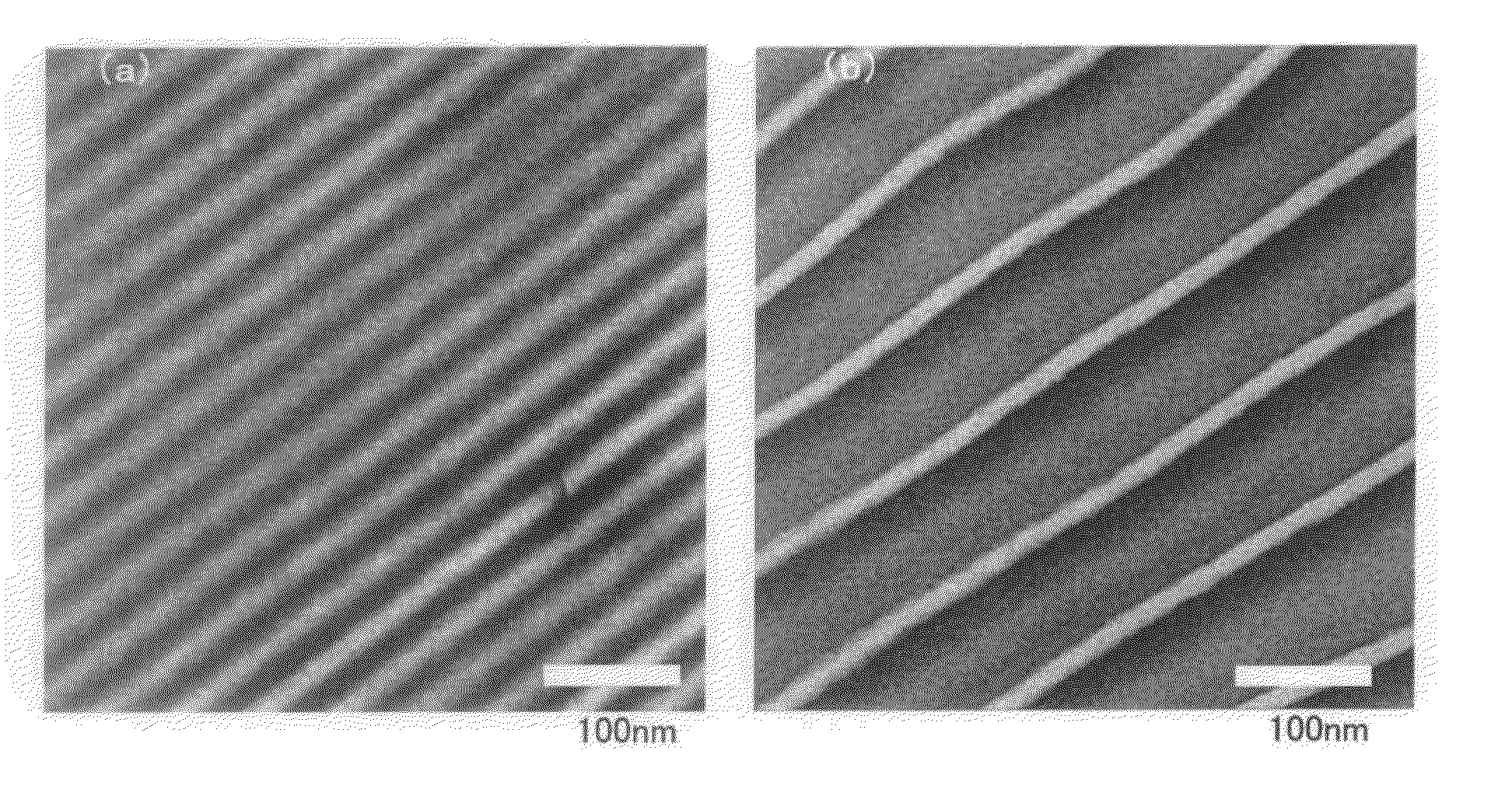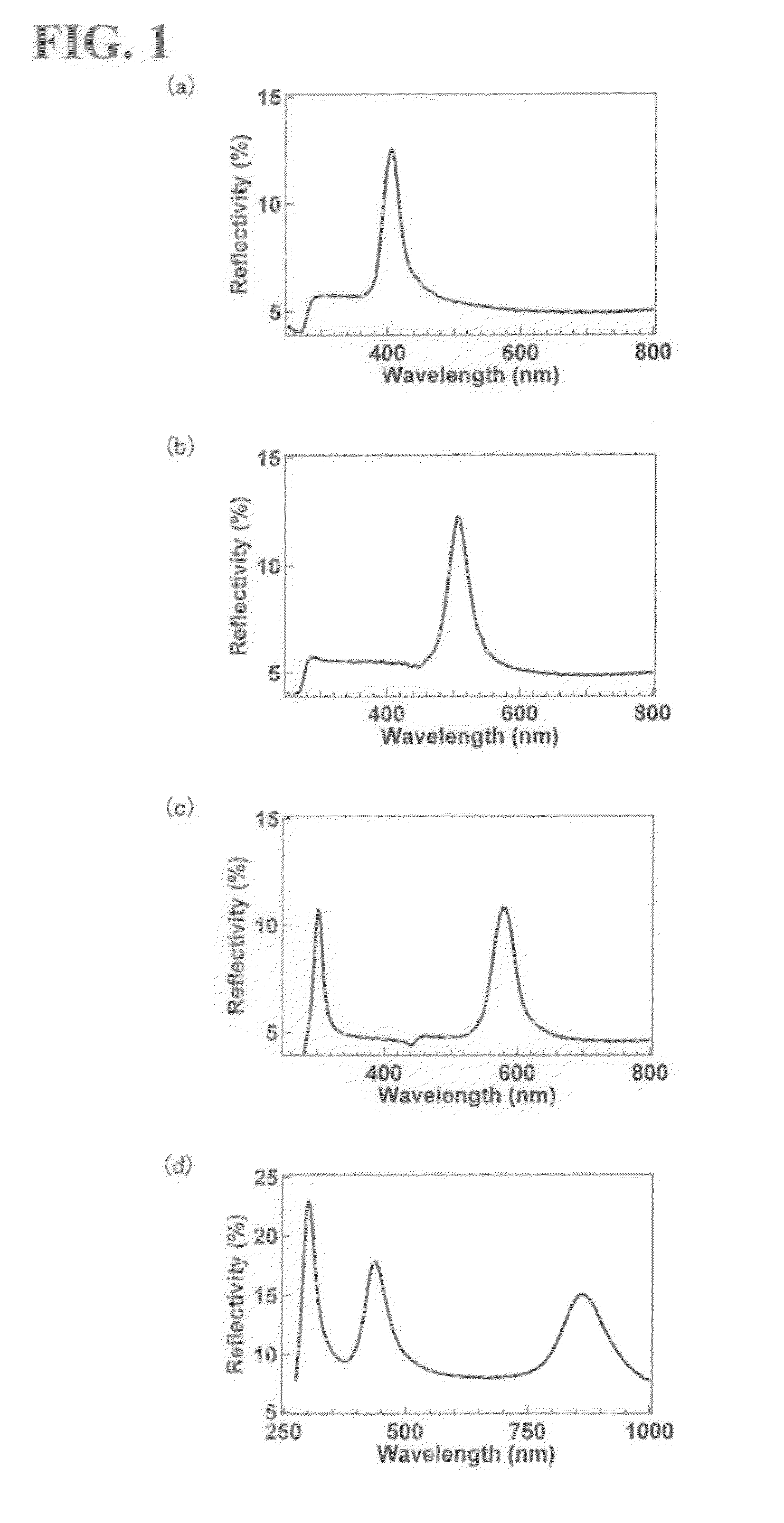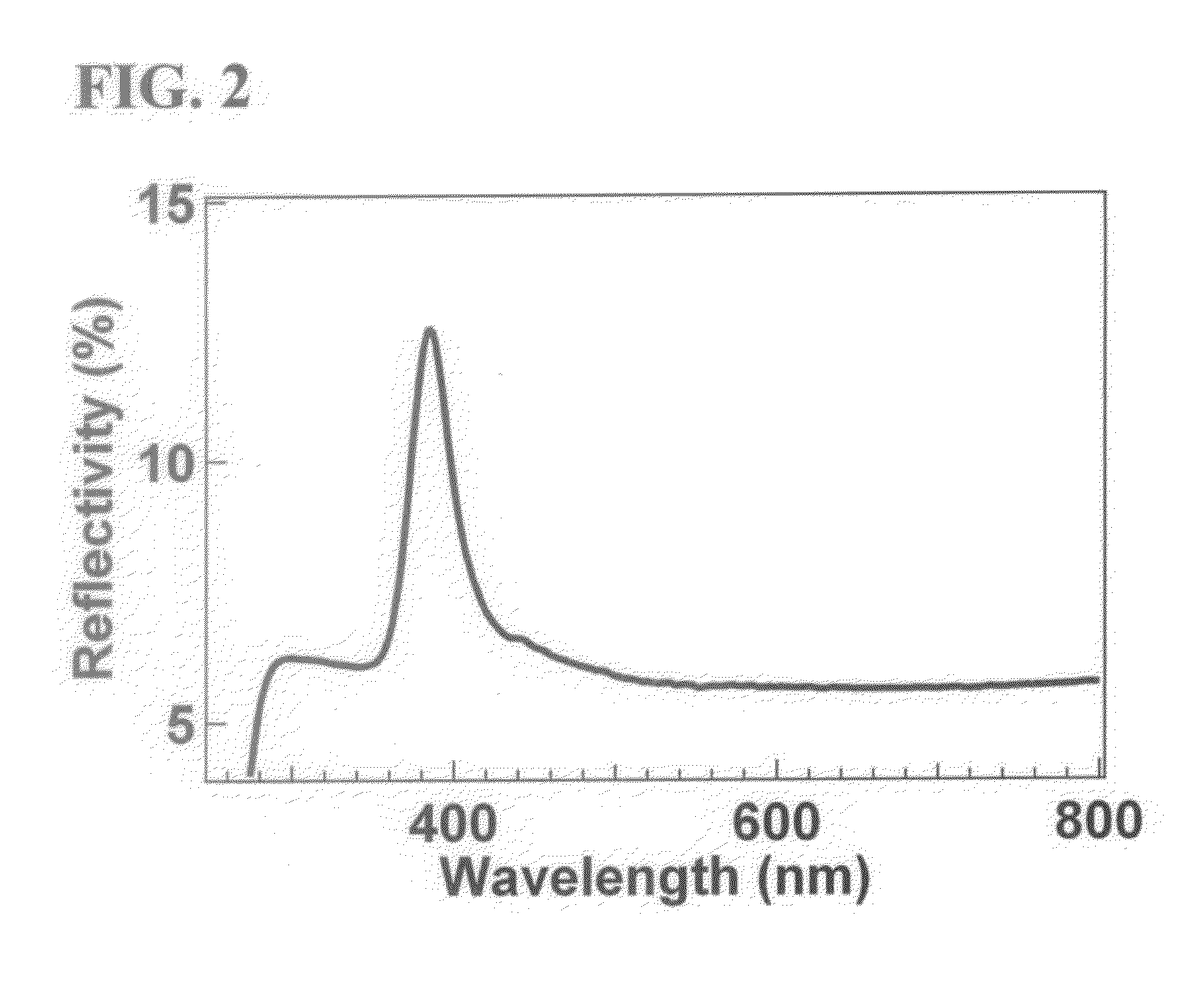Non-volatile photonic material and production method of the same
a non-volatile, photonic material technology, applied in the direction of camera filters, lighting and heating apparatus, instruments, etc., can solve the problems of limited use and production of such nanostructures in the field of non-volatile photonic materials
- Summary
- Abstract
- Description
- Claims
- Application Information
AI Technical Summary
Benefits of technology
Problems solved by technology
Method used
Image
Examples
example 1
[0051]Polystyrene-b-poly(2-vinylpyridine) (hereinafter referred to as “PS-P2VP”) was synthesized as an AB diblock copolymer with reference to a block copolymer synthesis method (high-vacuum breakable sealing method) disclosed in Polymer Journal 18, pp. 493-499 (1986). A procedure will be shown in detail below.
[0052]The interior of a high-vacuum reactor was washed with a solution of α-styrene tetramer disodium in THF. A THF solution (1.92×10−2 M, 5.5 mL) of cumyl potassium synthesized by a reaction of cumyl methyl ether and metallic potassium was introduced into the high-vacuum reactor, and then 300 mL of highly purified THF was added. After the reactor was cooled to −78° C. and the content in the reactor was sufficiently stirred, a solution of styrene monomer in THF (1.92 M, 25 mL) was introduced into the reactor, and thus anionic polymerization was started. After 15 minutes, a solution of 2-vinylpyridine monomer in THF (1.92 M, 25 mL) was introduced into the reactor, and thus block...
example 2
[0056]PS-P2VP was synthesized in the same manner as in Example 1, except that a solution of cumyl potassium in THF (1.92×10−2 M, 4.2 mL) was used. The resulting PS-P2VP was Mw / Mn=1.14, φs=0.47, and Mn=108 k. Thus obtained PS-P2VP is hereinafter referred to as SP02. Using this SP02, a photonic film of Example 2 was produced in the same manner as in Example 1.
example 3
[0057]PS-P2VP was synthesized in the same manner as in Example 1, except that a solution of cumyl potassium in THF (1.92×10−2 M, 3.2 mL) was used. The resulting PS-P2VP was Mw / Mn=1.06, φs=0.50, and Mn=158 k. Thus obtained PS-P2VP is hereinafter referred to as SP03. Using the SP03, a photonic film of Example 3 was produced in the same manner as in Example 1.
PUM
| Property | Measurement | Unit |
|---|---|---|
| Structure | aaaaa | aaaaa |
| Size | aaaaa | aaaaa |
| Wavelength | aaaaa | aaaaa |
Abstract
Description
Claims
Application Information
 Login to View More
Login to View More - R&D
- Intellectual Property
- Life Sciences
- Materials
- Tech Scout
- Unparalleled Data Quality
- Higher Quality Content
- 60% Fewer Hallucinations
Browse by: Latest US Patents, China's latest patents, Technical Efficacy Thesaurus, Application Domain, Technology Topic, Popular Technical Reports.
© 2025 PatSnap. All rights reserved.Legal|Privacy policy|Modern Slavery Act Transparency Statement|Sitemap|About US| Contact US: help@patsnap.com



